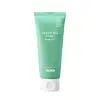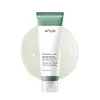What's inside
What's inside
 Key Ingredients
Key Ingredients

 Benefits
Benefits

 Concerns
Concerns

No concerns
 Ingredients Side-by-side
Ingredients Side-by-side

Water
Skin ConditioningCellulose
AbsorbentDipropylene Glycol
HumectantCamellia Sinensis Leaf Water 5%
MaskingAcrylates/C10-30 Alkyl Acrylate Crosspolymer
Emulsion StabilisingGlyceryl Caprylate
EmollientCaprylyl Glycol
EmollientPropanediol
SolventCamellia Sinensis Leaf Powder 0.2%
ExfoliatingPolyglyceryl-10 Laurate
Skin Conditioning1,2-Hexanediol
Skin ConditioningArginine
MaskingAllantoin
Skin ConditioningCitrus Limon Peel Oil
MaskingDisodium EDTA
Citrus Medica Vulgaris Peel Oil
MaskingCitrus Grandis Peel Oil
MaskingLavandula Angustifolia Oil
MaskingCitrus Aurantium Dulcis Oil
MaskingCitrus Nobilis Peel Oil
MaskingEucalyptus Globulus Leaf Oil
PerfumingRosmarinus Officinalis Leaf Oil
MaskingCitrus Aurantium Dulcis Flower Oil
AstringentLimonene
PerfumingWater, Cellulose, Dipropylene Glycol, Camellia Sinensis Leaf Water 5%, Acrylates/C10-30 Alkyl Acrylate Crosspolymer, Glyceryl Caprylate, Caprylyl Glycol, Propanediol, Camellia Sinensis Leaf Powder 0.2%, Polyglyceryl-10 Laurate, 1,2-Hexanediol, Arginine, Allantoin, Citrus Limon Peel Oil, Disodium EDTA, Citrus Medica Vulgaris Peel Oil, Citrus Grandis Peel Oil, Lavandula Angustifolia Oil, Citrus Aurantium Dulcis Oil, Citrus Nobilis Peel Oil, Eucalyptus Globulus Leaf Oil, Rosmarinus Officinalis Leaf Oil, Citrus Aurantium Dulcis Flower Oil, Limonene
Water
Skin ConditioningDipropylene Glycol
HumectantCellulose
Absorbent1,2-Hexanediol
Skin ConditioningHouttuynia Cordata Flower/Leaf/Stem Water
AntimicrobialAcrylates/C10-30 Alkyl Acrylate Crosspolymer
Emulsion StabilisingTromethamine
BufferingAllantoin
Skin ConditioningCarthamus Tinctorius Flower Extract
Skin ConditioningPropanediol
SolventDextrin
AbsorbentGardenia Florida Fruit Extract
Skin ConditioningDisodium EDTA
Theobroma Cacao Extract
Skin ConditioningGlycerin
HumectantAloe Ferox Leaf Extract
Skin ConditioningBioflavonoids
Skin ConditioningSodium Hyaluronate
HumectantCaprylyl Glycol
EmollientCapryloyl Salicylic Acid
ExfoliatingBrassica Oleracea Italica Extract
AstringentEthylhexylglycerin
Skin ConditioningWater, Dipropylene Glycol, Cellulose, 1,2-Hexanediol, Houttuynia Cordata Flower/Leaf/Stem Water, Acrylates/C10-30 Alkyl Acrylate Crosspolymer, Tromethamine, Allantoin, Carthamus Tinctorius Flower Extract, Propanediol, Dextrin, Gardenia Florida Fruit Extract, Disodium EDTA, Theobroma Cacao Extract, Glycerin, Aloe Ferox Leaf Extract, Bioflavonoids, Sodium Hyaluronate, Caprylyl Glycol, Capryloyl Salicylic Acid, Brassica Oleracea Italica Extract, Ethylhexylglycerin
 Reviews
Reviews

Ingredients Explained
These ingredients are found in both products.
Ingredients higher up in an ingredient list are typically present in a larger amount.
1,2-Hexanediol is a synthetic liquid and another multi-functional powerhouse.
It is a:
- Humectant, drawing moisture into the skin
- Emollient, helping to soften skin
- Solvent, dispersing and stabilizing formulas
- Preservative booster, enhancing the antimicrobial activity of other preservatives
Acrylates/C10-30 Alkyl Acrylate Crosspolymer is a synthetic polymer. It is used to thicken and improve the texture of products. Due to its properties, it can prevent water and oil ingredients from separating.
Allantoin is a soothing ingredient known for its protective and moisturizingg properties. Because of this, it is often added to products with strong active ingredients.
Studies show higher concentrations of this ingredient can promote wound healing.
Though it can be derived from the comfrey plant, allantoin is produced synthetically for cosmetic products to ensure purity.
Learn more about AllantoinCaprylyl Glycol is a humectant and emollient, meaning it attracts and preserves moisture.
It is a common ingredient in many products, especially those designed to hydrate skin. The primary benefits are retaining moisture, skin softening, and promoting a healthy skin barrier.
Though Caprylyl Glycol is an alcohol derived from fatty acids, it is not the kind that can dry out skin.
This ingredient is also used as a preservative to extend the life of products. It has slight antimicrobial properties.
Learn more about Caprylyl GlycolCellulose is the main component of plant cell walls. It is used as an emulsifier, absorbent, and texture enhancer.
This ingredient has many functions:
Fun fact: Cellulose is the most abundant form of organic polymer on Earth.
Learn more about CelluloseDipropylene Glycol is a synthetically created humectant, stabilizer, and solvent.
This ingredient helps:
Dipropylene glycol is technically an alcohol, but it belongs to the glycol family (often considered part of the ‘good’ alcohols). This means it is hydrating and gentle on skin unlike drying solvent alcohols like denatured alcohol.
As a masking agent, Dipropylene Glycol can be used to cover the smell of other ingredients. However, it does not have a scent.
Studies show Dipropylene Glycol is considered safe to use in skincare.
Learn more about Dipropylene GlycolDisodium EDTA plays a role in making products more stable by aiding other preservatives.
It is a chelating agent, meaning it neutralizes metal ions that may be found in a product.
Disodium EDTA is a salt of edetic acid and is found to be safe in cosmetic ingredients.
Learn more about Disodium EDTAPropanediol is an all-star ingredient. It softens, hydrates, and smooths the skin.
It’s often used to:
Propanediol is not likely to cause sensitivity and considered safe to use. It is derived from corn or petroleum with a clear color and no scent.
Learn more about PropanediolWater. It's the most common cosmetic ingredient of all. You'll usually see it at the top of ingredient lists, meaning that it makes up the largest part of the product.
So why is it so popular? Water most often acts as a solvent - this means that it helps dissolve other ingredients into the formulation.
You'll also recognize water as that liquid we all need to stay alive. If you see this, drink a glass of water. Stay hydrated!
Learn more about Water